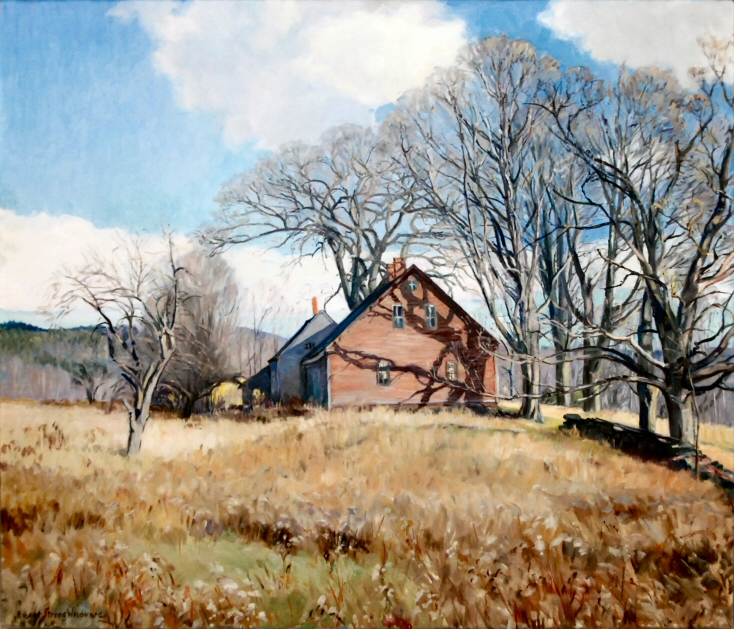Quick Reference
Painted 1945
Off Jacksonville Stage Rd., facing
east in West Halifax, Vermont
Oil on Canvas
Landscape
Halifax House
25" x 30"
Unknown
Ethel R. Dow
NA
Related Links
- See also the...
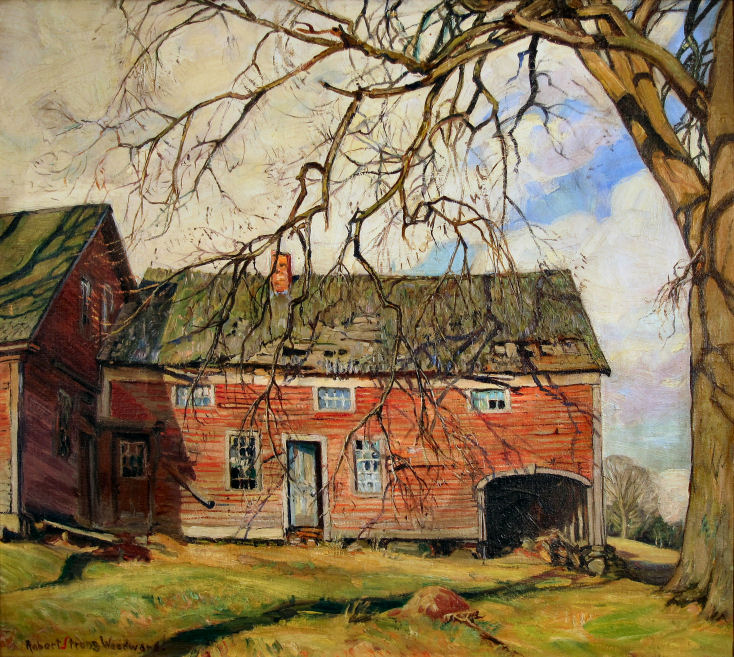 Halifax House Gallery to view related pieces.
Halifax House Gallery to view related pieces.
- See also At Haying Time to view related pieces.
- See also the...
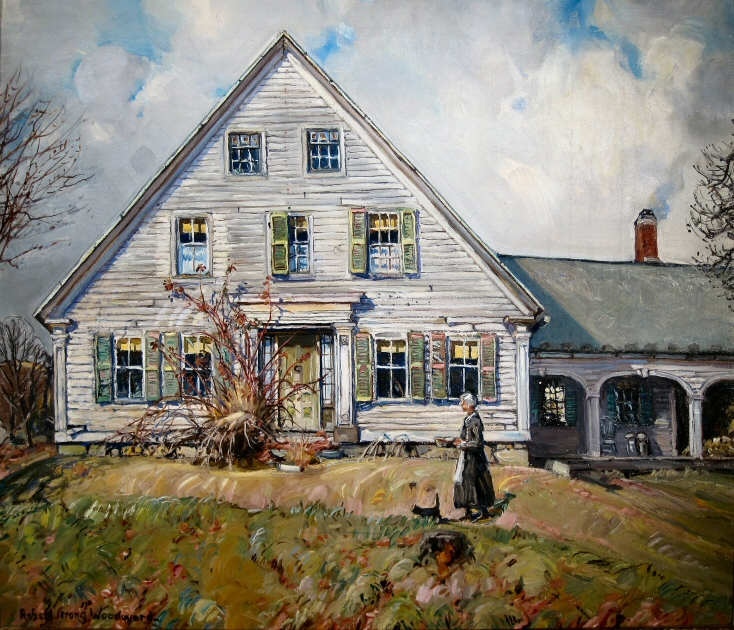 Houses Gallery to view related pieces.
Houses Gallery to view related pieces.
- Read the Scrapbook story for more about the Halifax House.
- See also the...
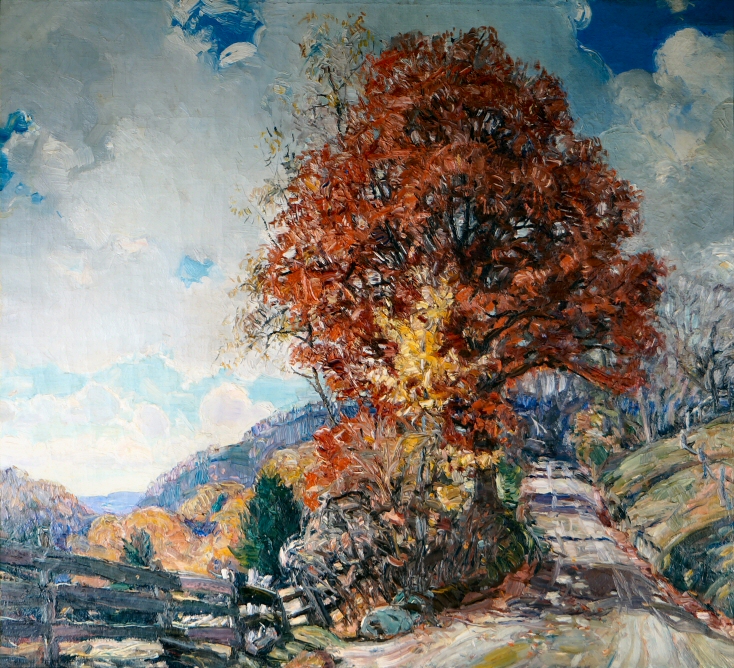 Burning Autumn Gallery to view related pieces.
Burning Autumn Gallery to view related pieces.
- See the Sketchbook drawing of a similar view.
- See also RSW's ...
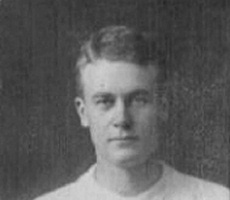 Personal Friends Gallery
Personal Friends Gallery
- See also the...
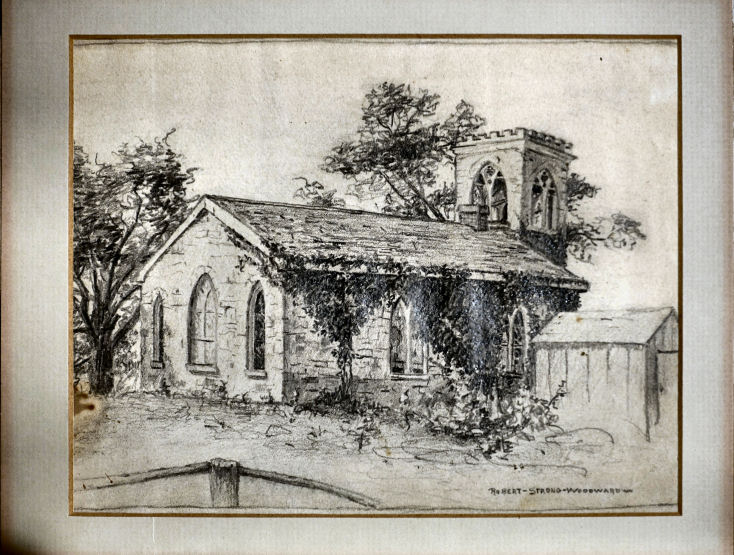 Sketch Book Gallery to view related pieces.
Sketch Book Gallery to view related pieces.
- See also the...
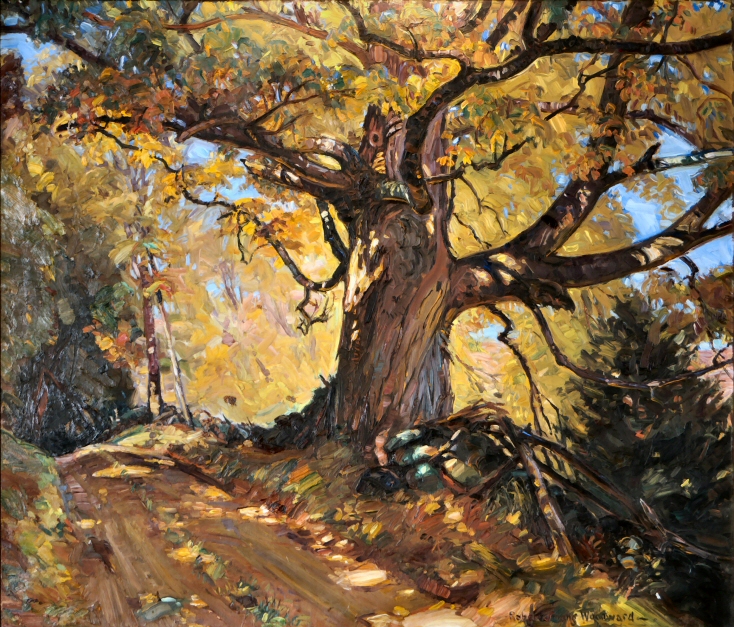 Trees Gallery to view related pieces.
Trees Gallery to view related pieces.
- See also the...
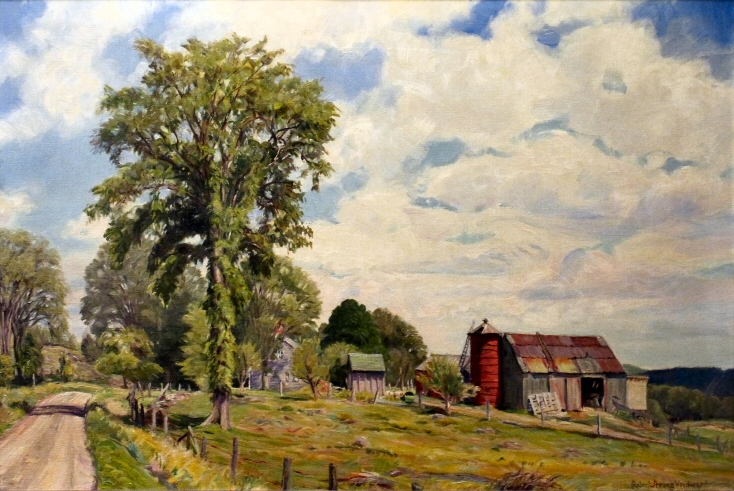 Farms Gallery to view related pieces.
Farms Gallery to view related pieces.
Related Halifax House
Sketch Book Links...
Featured Artwork: In November
RSW's Diary Comments
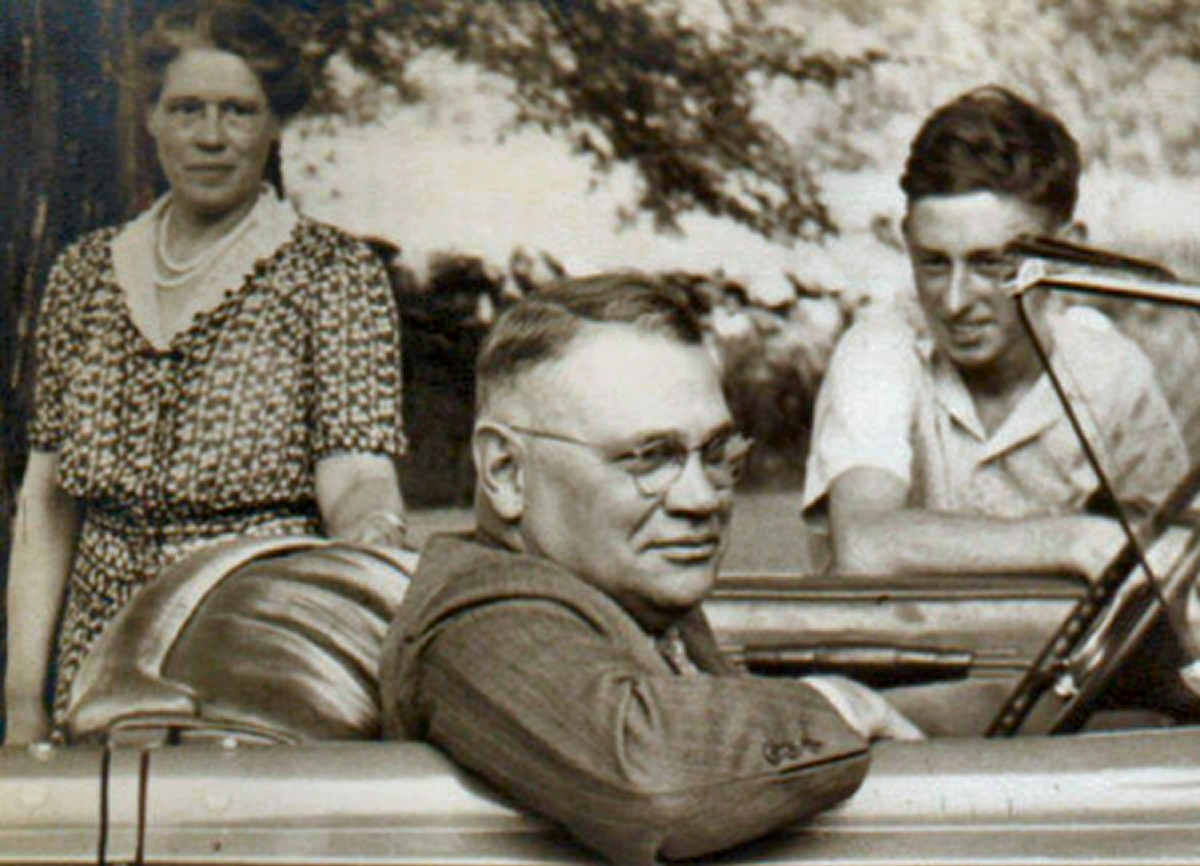
 L to R-- Ethel Dow, Woodward, and Mark
L to R-- Ethel Dow, Woodward, and Mark
"Painted in 1945. The west gable view of the Halifax House (same point of view as in the summer picture At Haying Time) showing mountain to left, arched elm over ell gable and the half-dozen magnificent yard maples to the right over a stone wall, prominent foreground of Nov. abandoned grasses and goldenrod gone to seed. A November sky of clouds and blue, tree shadows on sunlit red gable end of house. One of the most loved canvases I ever made, as holding all I love in New England November. Bought in the early spring of 1946 by Ethel R. Dow, 46 Warren Ave. Woburn. Mass. She has been planning to buy a canvas for several years and this one seemed to hold her choice of 'everything'."
Comments on the back of a sepia print:
"Characteristic shapes of apple tree, maple and elm."

 The painting hanging on Ethel's wall
The painting hanging on Ethel's wall
Editor's Note:
This painting, its subject, its month, and its owner are 'just of few of Woodward's favorite
things,' all coming together. Ethel Robinson Dow
is one of Woodward's dearest friends. One of a number of strong, inde-pendent women that accompanied him on
his painting excursions or transversing the country side and joining him in his favorite activity- picnicking. Ethel was
the Smith College roommate of Julia Bourland, the eldest daughter of the family he stayed with in Peoria, IL, after his
parents went to California. He met her in Peoria when she came home with Julia for one of their school's breaks. They
would later bump into each other 10 or so years later locally and became fast friends.
As it is with many
of Woodward's favorite paintings that he either kept for himself, or sold to museums or private collectors, this falls
under the category of 'for friends only'. Given the year this was painted, we would not be surprised at all if he made this
just for Ethel without telling her it was for her. Other friends that got 'first dibs' on certain paintings include,
The Lunts, F. Earl Williams,
Harold Grieve, and patrons
Mrs. Josephine Everett or Mrs. Ada Moore.
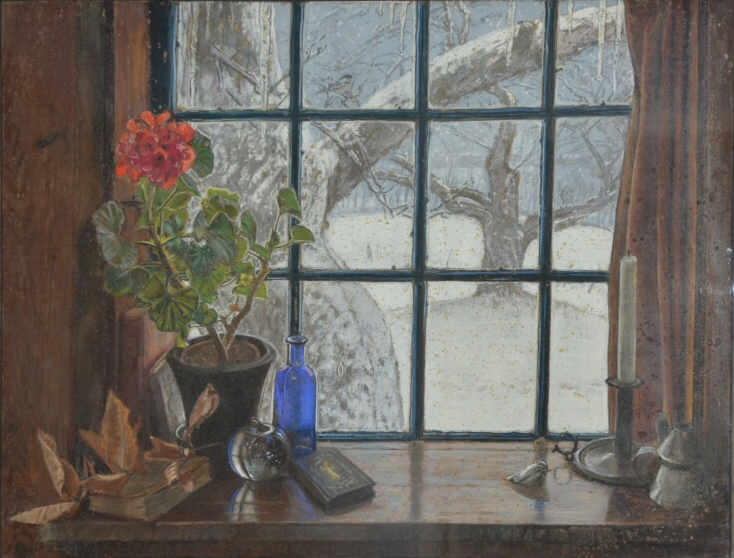
 New Snow
New Snow
This chalk drawing was made special and given as a
gift to Ethel. It is one of only two, maybe three pastel
Window Picture Paintings made by the artist. It is
possible RSW did the same with In November and
knew what subject he would paint for sometime prior.
The year 1946 is interesting for several reasons. For one thing, it is kind of late in both his career (he would retire for good 6 years later) and for another, Ethel and Woodward had been friends for many years already. It is probably not a reach to say she would have wanted to buy a painting the entire time they had been friends. Perhaps it took her this long to finally come up with the funds. For yet another thing, the painting itself has a link to the mid-1930s that is notable for two reasons: (1) while he was still visiting the Halifax House in the 1940s, it was no longer abandoned or plighted. It had been bought and fixed up by its new owner and so it no longer fit the artist aesthetic. Most of the Halifax House paintings were painted in the 1930s. However, in an interesting twist and our second reason (2) for pointing out the year is the fact that there is a sketch of this SAME scene in a sketchbook in Woodward's collection of things from the mid 1930s leaving us wondering if the sketch was the inspiration for the painting!
Additional Notes
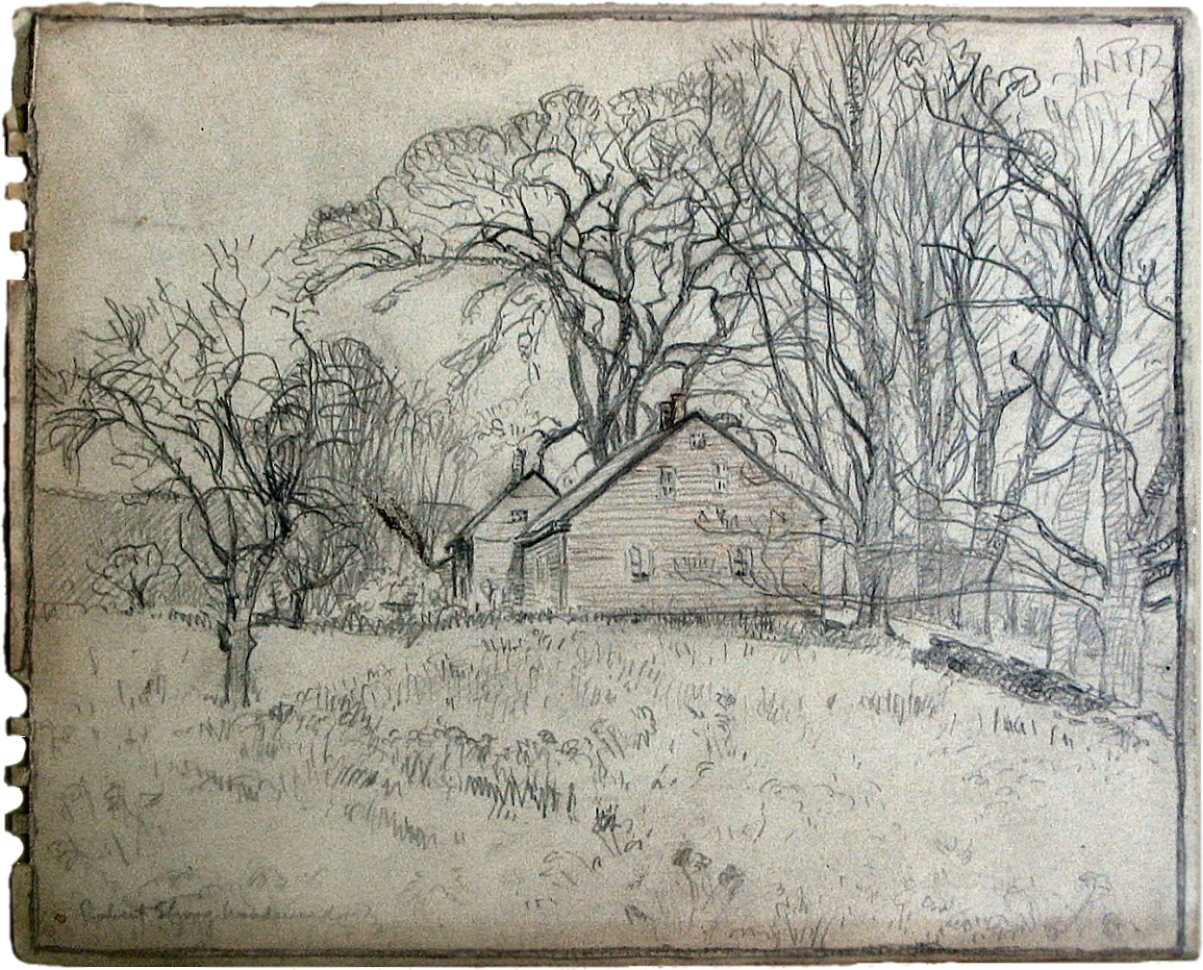
 In November; A Sketch
In November; A Sketch
This sketch of the same scene as the painting above is
found in a sketchbook from the early-to-mid 1930s.
To the right is the sketch referenced above. You will see that there is not a lot, if anything, different from the sketch and the painting above. The trees all appear to be the same. The house in similarly faded condition. It is not out of the realm of possibility that Woodward knew Ethel was saving to buy a painting (it is unknown if he gave discounts to friends... he was known to be a stickler on price) and so he picked a subject and scene she would no doubt adore and held on to it. The fact that we have no record of it exhibiting anywhere helps our case.
 Besides Ethel and the Halifax House, the month of November
is significant as well. Early in Woodward's career he professed to love the month of November. Taking about the year-round
beauty of New England's subject matter, in comparison to California where he lived for 4 years, he famously tells the Boston
Evening Post reporter Margaret Getchell, who visits the artist in Shelburne Falls to do a featured article on him "even in November,"
can he find something to paint. See her remarks below:
Besides Ethel and the Halifax House, the month of November
is significant as well. Early in Woodward's career he professed to love the month of November. Taking about the year-round
beauty of New England's subject matter, in comparison to California where he lived for 4 years, he famously tells the Boston
Evening Post reporter Margaret Getchell, who visits the artist in Shelburne Falls to do a featured article on him "even in November,"
can he find something to paint. See her remarks below:
"The hills are very lovely, even in November. Say 'even in November' to Mr. Woodward, and he will expostulate. He loves November as it touches his hills, and thinks it is a much-abused month, for it brings many a scene which invites the artist's eye as forcefully by its very wistfulness, as does the frisky joy of the springtime, or the quiet peace of winter's snow-bound fields, or the hilarity of the gay-colored autumn."
Boston Evening Post, Dec. 18, 1920, by Margaret C. Getchell
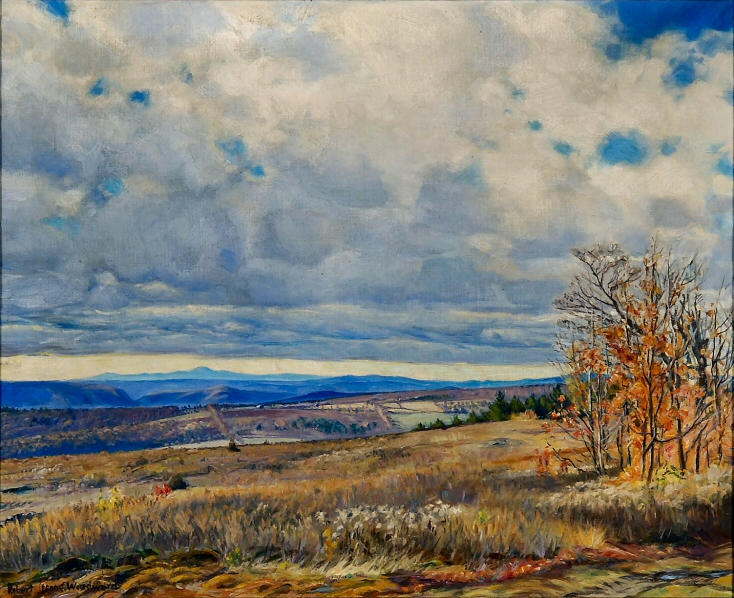
 A November painting: After Rain
A November painting: After Rain
We have been gathering and preparing to do a
Scrapbook essay on just how significant November is to Woodward's message as well as his aesthetic. The artist generally
does not make obvious his perspective to his audience. To do so would ruin the joy of its discovery. Woodward
is, if nothing else, the master of the understate, almost to an infuriating fault when reading his diaries and journals. He does,
however, leave plenty of bread crumbs and November is one of his most popular months. Viewing just the
Beech Tree gallery alone will be demonstration enough to illustrate the importance of November to Woodward.
Poetically, November's aesthetic is one of repose. A pause, if you will, before the transition to a new cycle of life and growth. It is
the month we traditionally give our thanks and gratitude to our year's culmination and harvest. A time for triumpthant celebration
and the upcoming holidays. It is a time of reflection and preparation for the long, dark and cold days of winter.
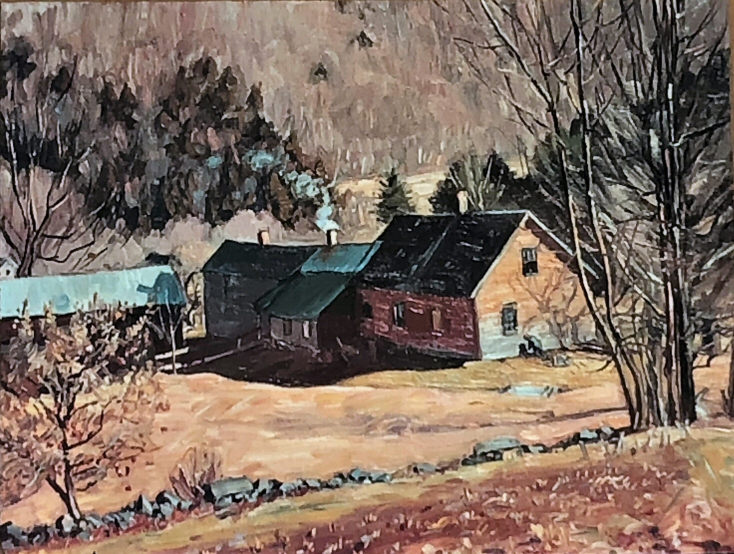
 A November painting: Portrait of a Shadow
A November painting: Portrait of a Shadow
It is the time of the year when things dry and turn goldenrod in color or coppery reddish rust-like brown. Its coloring is as unique as any other time of the year. November is the month of the rustic and weathered, the barren and pale...faded, much like the many homes and farms the artist recorded over his career. And here, in 1946, clearly the NOVEMBER of his career, he made this painting for one of his dearest friends who struggled to save enough money through the years they had known each other to buy one of his paintings is as equally poetic as the painting itself.

.png)

